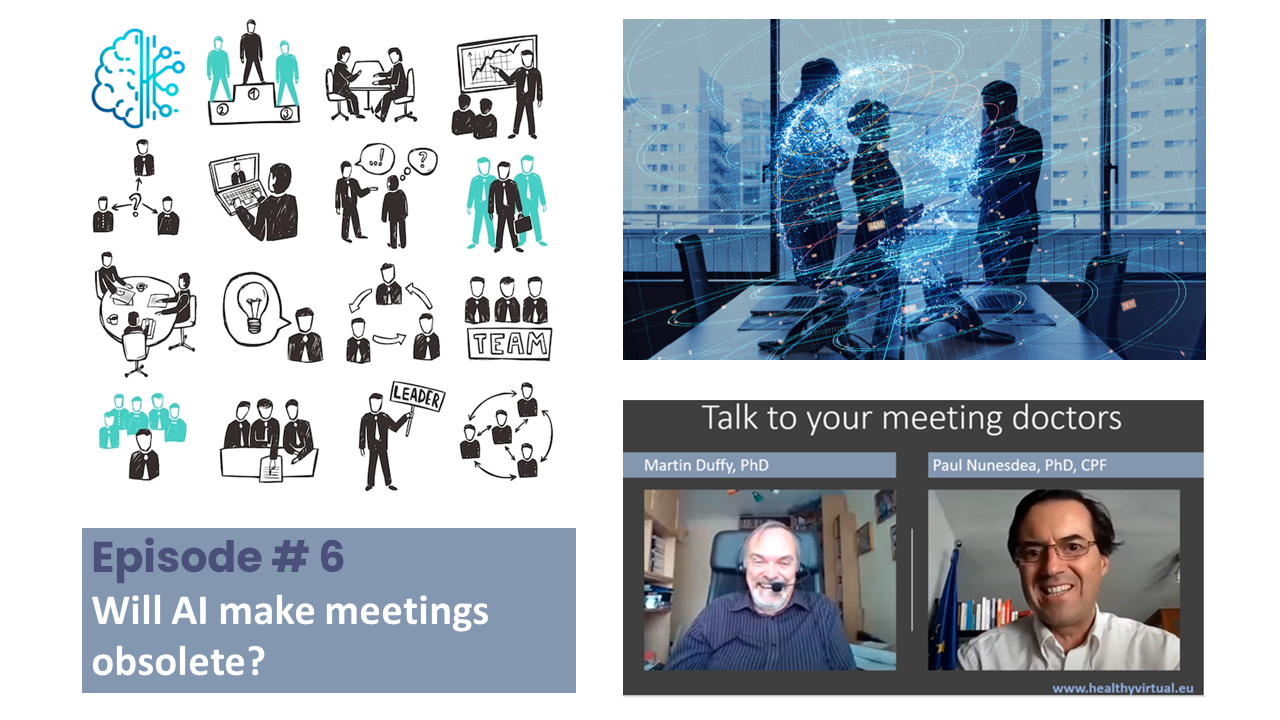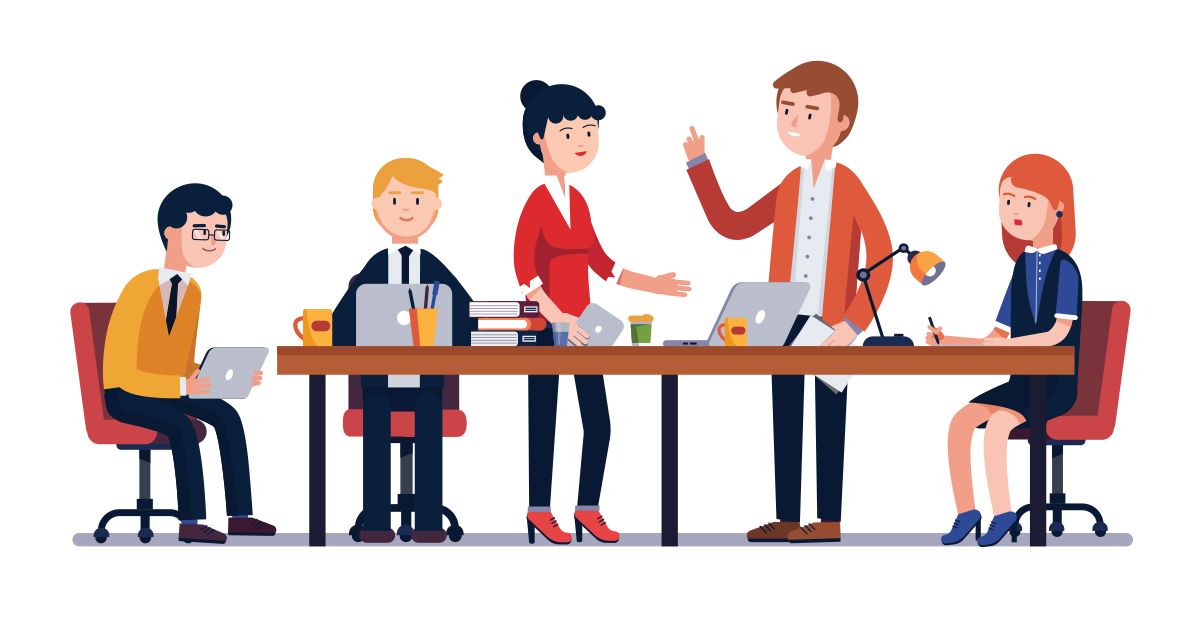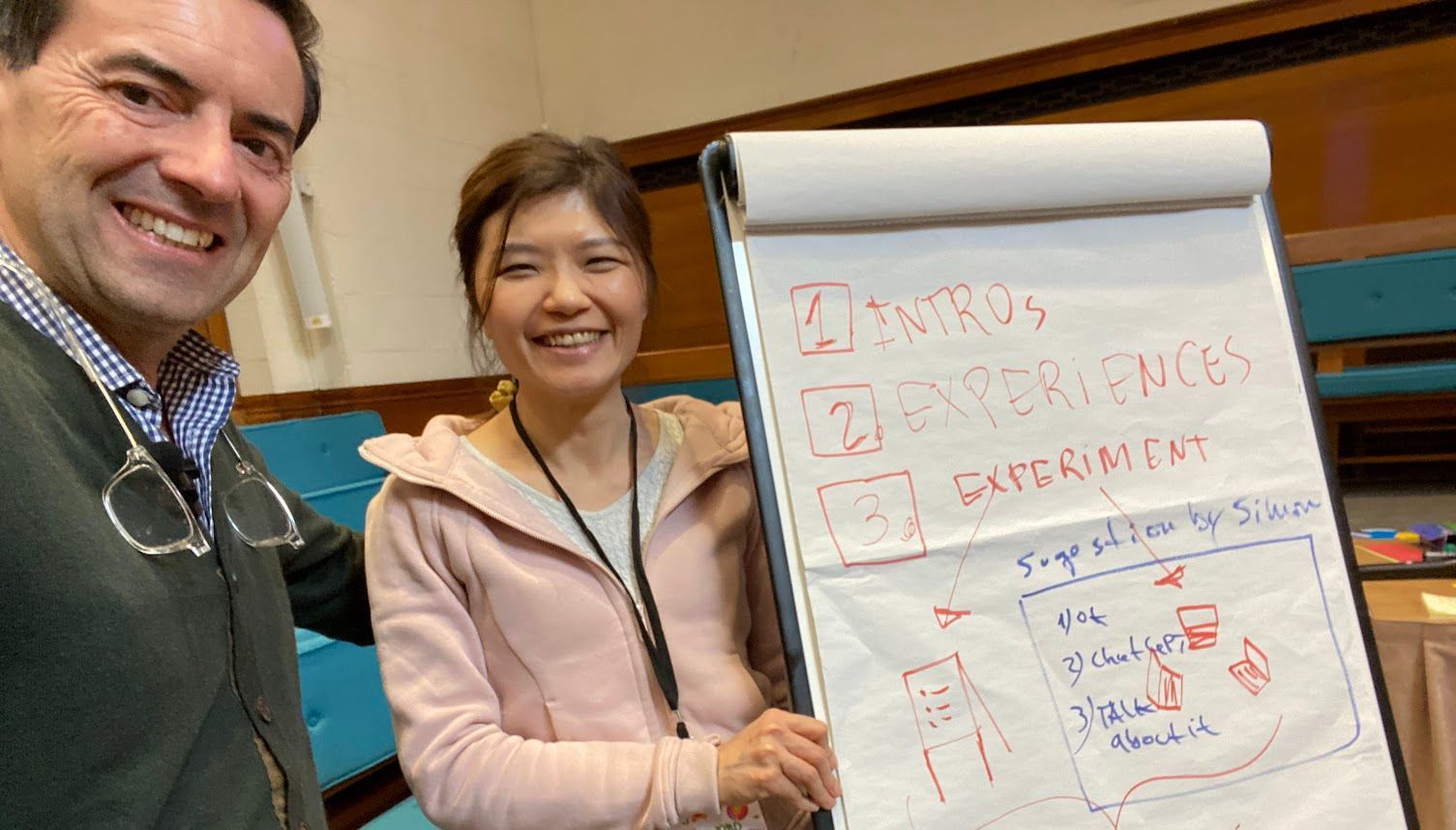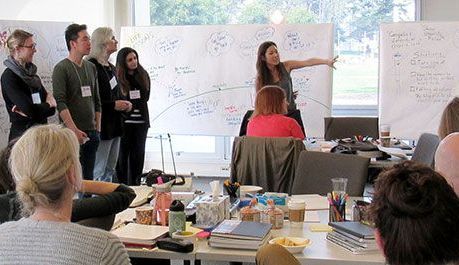Can you see my screen?
How to Design and Deliver Engaging and Productive Digital Collaboration

Are you looking for ways to improve your team’s collaboration and productivity in the digital age? Do you want to learn how to use online platforms to communicate, share, and work on projects together effectively? If so, you are not alone. Digital collaboration is becoming increasingly important for teams and organizations, especially in the age of remote and hybrid work.
Digital Collaboration Explained
But what is digital collaboration exactly? And how can you make the most of it? In this article, we will answer these questions and more. We will explain what digital collaboration is, how it differs from traditional collaboration, and why it matters. We will also share some best practices and tips on how to choose and use the right software solutions for your team’s needs and goals. By the end of this article, you will have a better understanding of how to design and deliver engaging and productive digital collaboration for your team.
A few introductory take-aways:
- Digital collaboration is the practice of teams communicating, sharing, and collaborating on projects together through online platforms.
- Digital collaboration differs from traditional collaboration in terms of how team members interact and share knowledge. Digital collaboration enables teams to easily store information, share knowledge, and work on approaches together asynchronously or in real time.
- Digital collaboration requires a change in team dynamics and a supportive environment where employees feel their goals and job tasks are supported by the technology they use.
- Digital collaboration can be enhanced by using different types of software solutions depending on the needs and goals of the team. Some solutions are better suited for close-knit colleagues who need to coordinate and align on tasks, while others are better for making connections across the organization and finding the right experts.
- Digital collaboration can improve productivity, innovation, engagement, and happiness for teams and organizations, especially in the age of remote and hybrid work.
Why Digital Collaboration is Important?
Digital collaboration is important and you should be paying more attention to it because:
It can improve your team’s communication, productivity, innovation, engagement, and happiness, especially in the age of remote and hybrid work.
It can help you break down silos and prevent miscommunication between different functions and departments in your organization.
It can help you choose and use the right software solutions for your team’s needs and goals, such as mixed meeting modalities, virtual whiteboards, recording and transcription capabilities
It can help you find and collaborate with the right experts and partners across your organization and beyond.
It can help you address your learning needs and be a part of an interactive learning experience.
If you want to learn more about how to design and deliver engaging and productive digital collaboration for your team, you can read the remainder of this article.
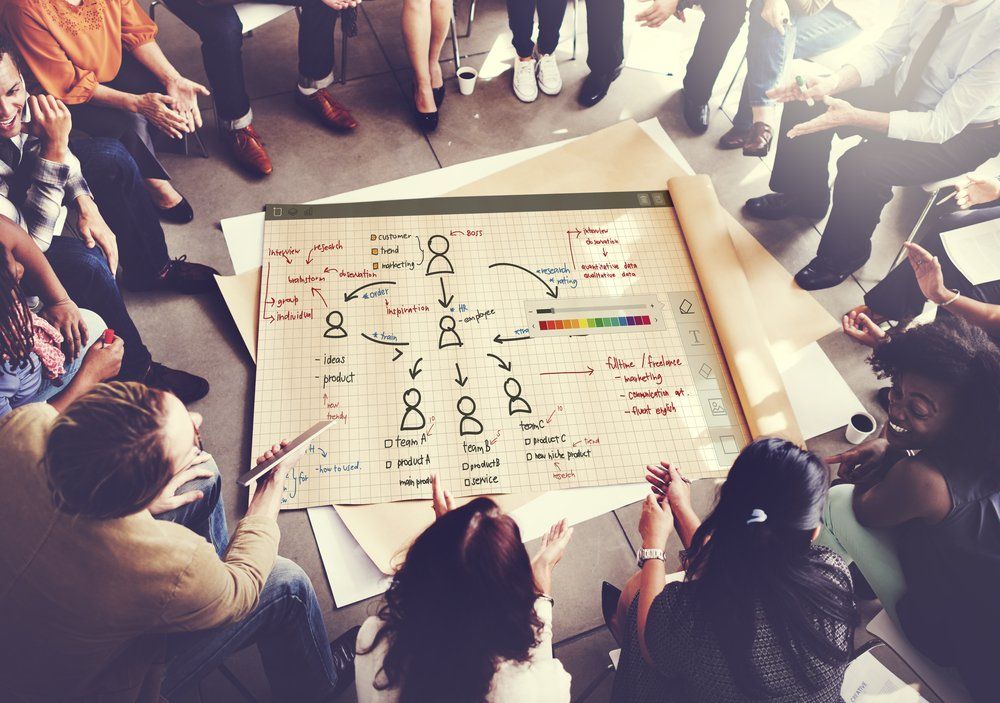
Main challenges of digital collaboration
Some of the main challenges when adopting digital collaboration are:
- Feeling disconnected: A rapid shift to digital collaboration can leave team members feeling disconnected from one another and from the business itself. This can affect their motivation, engagement, and trust1.
- Delayed responses: One of the benefits of collaborating in person is that you can usually get answers immediately. However, when working online, you may have to wait for hours or days for a response from your colleagues or clients. This can slow down your work and create frustration.
- Project management: Managing a project online can be challenging, especially when you have to coordinate with multiple stakeholders across different time zones and locations. You may face issues such as unclear roles and responsibilities, conflicting priorities, lack of visibility, and poor communication.
- Technology issues: Choosing and using the right software solutions for your team’s needs and goals can be difficult. You may have to deal with problems such as compatibility, security, privacy, cost, training, and support. You may also have to switch between different apps and platforms to access all your files and documents.
- Diversity issues: Working with a diverse team can bring many benefits, such as increased creativity, innovation, and problem-solving. However, it can also pose some challenges, such as cultural differences, language barriers, communication styles, and expectations.
To overcome these challenges, you need to adopt some best practices and tips for designing and delivering effective digital collaboration. For example, you can:
- Establish clear goals and expectations for your team and communicate them regularly.
- Foster trust and communication by using video calls, instant messaging, and feedback tools.
- Choose the right software solutions that suit your team’s needs and goals, and provide adequate training and support for them.
- Use project management tools to track progress, assign tasks, share updates, and resolve issues.
- Respect and appreciate the diversity of your team members and learn from their perspectives.

Choosing the right platform for your team
To choose the best software solution for your team, you need to consider several factors, such as:
- Your team’s needs and goals: What are the main tasks and challenges that your team faces? What are the desired outcomes and benefits that you want to achieve? How do you measure your team’s performance and progress?
- The software features and functionality: What are the essential and nice-to-have features that your team needs? How easy and intuitive is the software to use? How reliable and secure is the software? How well does it integrate with other tools that your team uses?
- The software price and value: How much does the software cost and what are the payment options? Is it within your team’s budget? What are the return on investment (ROI) and cost-benefit analysis (CBA) of using the software? How does it compare with other similar solutions in the market?
To help you with your decision, you can use some online resources, such as:
- Software reviews and ratings: You can read user reviews and ratings of different software solutions on websites such as Capterra, G2, Software Advice, etc. These can give you an insight into the pros and cons of each software, as well as user feedback and satisfaction.
- Software demos and trials: You can request a demo or a free trial of the software solutions that interest you. This can help you test the software features and functionality, as well as get a feel of how it works for your team.
- Software comparison tools: You can use online tools such as Software Advice’s Product Selection Tool or PCMag’s Comparison Tool to compare different software solutions based on your criteria and preferences. These can help you narrow down your options and find the best fit for your team.
Some examples
There are many software solutions for digital collaboration, depending on your team’s needs and goals. Some examples are:
- Microsoft 365: This is a cloud-based suite of familiar software such as Word, Excel, PowerPoint, Outlook, etc. that allows you to share and edit documents online with your team. It also includes Microsoft Teams, a communication and collaboration platform that integrates chat, video calls, file sharing, and more.
- Miro: This is a visual collaboration platform that lets you create and share interactive whiteboards with your team. You can use it for brainstorming, planning, designing, presenting, and more. It also integrates with other tools such as Slack, Zoom, Google Drive,
- Airtable: This is a cloud-based database-driven collaboration tool that lets you create and manage spreadsheets, forms, calendars, kanban boards, galleries, and more. You can use it for organizing projects, workflows, data, and more. It also integrates with other tools.
- Slack: This is a team messaging app that lets you communicate and collaborate with your team in real time. You can create channels for different topics or projects, send direct messages, share files and links, make voice and video calls, and more. It also integrates with other tools such as Google Drive, Trello, Asana, etc.
- Asana: This is a project management and collaboration tool that lets you create and manage tasks, projects, workflows, goals, and more. You can assign tasks to team members, track progress and deadlines, communicate and give feedback, and more. It also integrates with other tools such as Gmail, Slack, Zoom, etc.
These are just some examples of software solutions for digital collaboration. There are many more options available in the market. You can use online resources such as Capterra or Software Advice to compare different solutions based on your criteria and preferences.

Improve your team's co-creation with digital collaboration
One of the examples of software solutions for digital collaboration is Howspace.
Howspace is an online collaboration platform that helps you facilitate dialogue and co-create change with your team. Some of the features of Howspace are:
- Interactive workspaces: You can create and customize workspaces for different projects, events, or processes. You can invite participants, share content, and enable collaboration using various widgets, such as chat, polls, surveys, video calls, etc.
- AI-powered analysis: You can use Howspace’s artificial intelligence (AI) to analyze large amounts of unstructured data, such as open-ended feedback, comments, or ideas. You can get insights into themes, sentiments, keywords, and more.
- Integrations and templates: You can integrate Howspace with other tools that you use, such as Microsoft Teams, Zoom, Google Drive, etc. You can also use templates to jumpstart your workspace creation process with best practices and inspirational content.
- Reporting and impact measurement: You can use Howspace’s reporting tools to track progress, engagement, and outcomes of your collaboration. You can also measure the impact of your collaboration on your team’s performance and goals.
Howspace can help you with various use cases, such as:
- Learning and development: You can use Howspace to design and deliver engaging and interactive learning experiences for your team. You can support both synchronous and asynchronous learning modes, as well as blended learning approaches.
- Organizational development: You can use Howspace to facilitate organizational change and development processes with your team. You can involve everyone in the dialogue, co-creation, and decision-making stages of the process.
- Workshops and events: You can use Howspace to plan and execute successful workshops and events with your team. You can create agendas, share materials, collect feedback, and more.

How to use Howspace effectively?
Here are some suggestions:
- Define your purpose and goals: Before you create a workspace, you should have a clear idea of what you want to achieve with your collaboration. What is the main topic or question that you want to explore? What are the desired outcomes and benefits that you want to achieve? How will you measure your success?
- Choose the right widgets and features: Depending on your purpose and goals, you should choose the widgets and features that best suit your needs. For example, if you want to collect feedback or ideas from your team, you can use polls, surveys, or ideation widgets. If you want to facilitate dialogue or brainstorming, you can use chat or video call widgets. If you want to share content or information, you can use text, image, video, or file widgets.
- Engage and motivate your participants: To ensure effective collaboration, you should engage and motivate your participants throughout the process. You can do this by:
- Sending personalized and timely invitations and reminders to join the workspace.
- Providing clear instructions and expectations for each activity or task.
- Encouraging participation and interaction by asking questions, giving feedback, and acknowledging contributions.
- Creating a positive and supportive atmosphere by using emojis, gifs, stickers, etc.
- Recognizing and rewarding achievements and progress by using badges, points, leaderboards, etc.
- Analyze and act on the results: After your collaboration is completed, you should analyze and act on the results. You can do this by:
- Using Howspace’s AI-powered analysis to get insights into themes, sentiments, keywords, and more from the data collected.
- Using Howspace’s reporting tools to track progress, engagement, and outcomes of your collaboration.
- Sharing the results and findings with your team and other stakeholders.
- Making decisions and taking actions based on the results and findings.
- Evaluating the impact of your collaboration on your team’s performance and goals.
You can integrate Howspace with other tools that you use by using the Embed widget or the Partner API. Here are some examples:
- Embed widget: You can use the Embed widget to embed content from other tools into your workspace. For example, you can embed Google Sheets, Miro whiteboards, Calendly schedules, and more. To use the Embed widget, you need to copy and paste the URL or embed code of the content that you want to embed into the widget settings.
- Partner API: You can use the Partner API to automate workspace creation, user management, and more. For example, you can use the Partner API to create workspaces based on templates, add or remove participants, send invitations and reminders, and more. To use the Partner API, you need to have a partner account and access to the API documentation.
You can learn more about Howspace integrations on their website: here.
About us
My Meeting Support, through its parent company col.lab | collaboration laboratory Ltd, aims to revolutionize the way events and training programs are managed. By bringing together a community of experienced facilitators and leveraging the power of Howspace™, it provides services that are not just about executing an event or a training session, but about crafting unique experiences that promote collaboration, learning, and engagement. It's about fostering connections and creating environments where ideas can thrive and lead to actionable outcomes. This approach ensures that every event is not just a fleeting moment but a lasting impact.
"Talk To Your Meeting Doctors" is a dynamic and engaging series that aims to address common challenges faced in meetings and offer expert advice and strategies to enhance meeting effectiveness. As co-hosts, Paul Nunesdea and Martin Duffy bring their wealth of experience and expertise to the forefront, sharing practical insights and facilitating discussions on topics such as meeting design, participant engagement, decision-making processes, and fostering a culture of collaboration.
This LinkedIn Live event series serves as a valuable platform for professionals from diverse industries and backgrounds to gain actionable knowledge, exchange ideas, and discover innovative approaches to optimize their meeting experiences. By leveraging the expertise of Paul Nunesdea and Martin Duffy, participants can tap into a wealth of practical guidance and best practices that will enable them to transform their meetings into productive, meaningful, and impactful sessions.
Check out the next upcoming episodes: here and our training courses here.
Further References
What is a Hybrid Meeting? An Introduction
https://www.uctoday.com/collaboration/what-is-a-hybrid-meeting-an-introduction/
Hybrid Council Chambers: Preparing for the Future of Government Meetings
https://www.govtech.com/sponsored/hybrid-council-chambers-preparing-for-the-future-of-government-meetings
17 ways to improve hybrid meetings for your teams – starting today
https://www.nureva.com/blog/conferencing/17-ways-to-improve-hybrid-meetings-for-your-teams-starting-today
Follow Us
"Be brave enough to start conversations that matter and shift the direction of change for the better."
col.lab | collaboration laboratory is a spin-off from the book series " Architecting Collaboration " and our privacy policy can be consulted here
My Meeting Support is an event services brand by col.lab | collaboration laboratory






